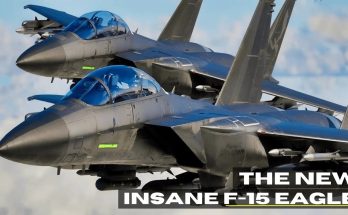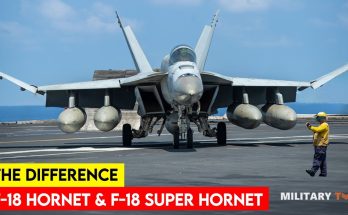The F-47 NGAD (Next Generation Air Dominance) is an incredibly exciting and futuristic concept for the U.S. Air Force, representing the future of aerial combat. While details about the aircraft are still largely classified, here’s what we can infer about it and why it’s generating such a buzz:
1. Next-Gen Stealth and Performance
-
The F-47 NGAD is designed to outclass and outmaneuver current and future threats with cutting-edge stealth technology. It’s expected to be more stealthy than the F-22 Raptor and F-35 Lightning II, using advanced shaping and coatings to reduce its radar signature and infrared visibility.
-
Performance-wise, it’s likely going to feature increased speed, agility, and altitude capabilities, making it a formidable opponent in both dogfights and long-range strikes. Some experts speculate it could push the boundaries of hypersonic flight, though that remains speculative.
2. Autonomous Capabilities
-
One of the most exciting aspects of the NGAD is its autonomous capabilities. The aircraft could potentially be part of a “loyal wingman” concept, where it works alongside piloted aircraft, taking on certain roles autonomously. These roles could include surveillance, electronic warfare, or even offensive missions, allowing the human pilot to focus on high-priority tasks.
-
The NGAD may also be equipped with AI-driven decision-making systems, making it more agile and capable of reacting faster to threats, even in high-pressure combat situations.
3. Sensor Fusion and Advanced Avionics
-
The F-47 NGAD is expected to have a next-gen sensor suite that integrates radar, electronic warfare systems, and optical sensors to provide real-time data fusion. This would give pilots a comprehensive view of the battlespace and allow them to make rapid, informed decisions.
-
Its advanced data-sharing capabilities would also allow it to seamlessly integrate with other assets, including other fighter jets, unmanned aerial vehicles (UAVs), and even space-based sensors, creating a highly effective and cohesive air combat network.
4. Hypersonic Weapons Integration
-
As part of its advanced design, the F-47 NGAD could potentially be equipped to carry hypersonic weapons, allowing it to strike targets at unprecedented speeds (greater than Mach 5). This capability would significantly enhance its ability to hit strategic targets deep behind enemy lines or counter emerging threats like hypersonic missiles.
-
The incorporation of hypersonic weapons could redefine strike capabilities, giving the U.S. Air Force an edge in deterring or neutralizing any adversary.
5. Long-Range and Persistent Combat
-
With a potential focus on extended range and persistent presence in contested environments, the F-47 NGAD could operate far beyond the reach of current fighter jets, bringing enhanced strike power to regions previously inaccessible.
-
Its range would likely be supported by advanced fuel technologies, possibly even in-flight refueling, allowing it to maintain a presence in contested airspaces for extended periods without being a logistical burden.
6. Advanced Propulsion
-
One of the biggest questions surrounding the F-47 NGAD is its propulsion system. It may incorporate advanced adaptive cycle engines or hybrid-electric systems that offer higher thrust, efficiency, and reduced signature, making it a highly effective multi-role fighter.
7. Next-Level Warfare Integration
-
The NGAD concept also focuses on network-centric warfare. It would be equipped to integrate with other branches of the military, such as the U.S. Navy, and could be supported by satellite and space-based assets for a truly multi-dimensional approach to warfare.
-
This interconnectedness would allow the F-47 to collaborate with other air assets, like stealth bombers, as well as other platforms on the ground or in space, offering unmatched coordination and strike power.
8. Combat-Ready in the 2030s and Beyond
-
The F-47 NGAD is part of a broader strategy to counter emerging threats from China, Russia, and other near-peer competitors. The U.S. Air Force has made it clear that they intend to have this new fighter ready for combat by the 2030s, preparing for a more competitive and technologically advanced global security environment.
-
The U.S. Air Force has already indicated that the F-47 NGAD will eventually replace the F-22 Raptor as the dominant air superiority fighter, along with providing strategic versatility to perform a variety of roles.
Why It Matters: The Future of Combat
The F-47 NGAD represents a bold leap forward in military aviation, where the combination of autonomy, AI, hypersonic technology, and next-gen avionics will create a highly lethal and adaptable platform for tomorrow’s wars. Its development signals that the U.S. is preparing to maintain air dominance well into the future, particularly as peer adversaries like China and Russia continue to develop their own advanced air combat technologies.
In short, the F-47 NGAD could revolutionize how air combat is fought, with an integrated mix of speed, stealth, autonomy, and firepower—transforming the battlefield in ways we are only beginning to understand. The future of combat just got a lot more real, and the stakes couldn’t be higher.



